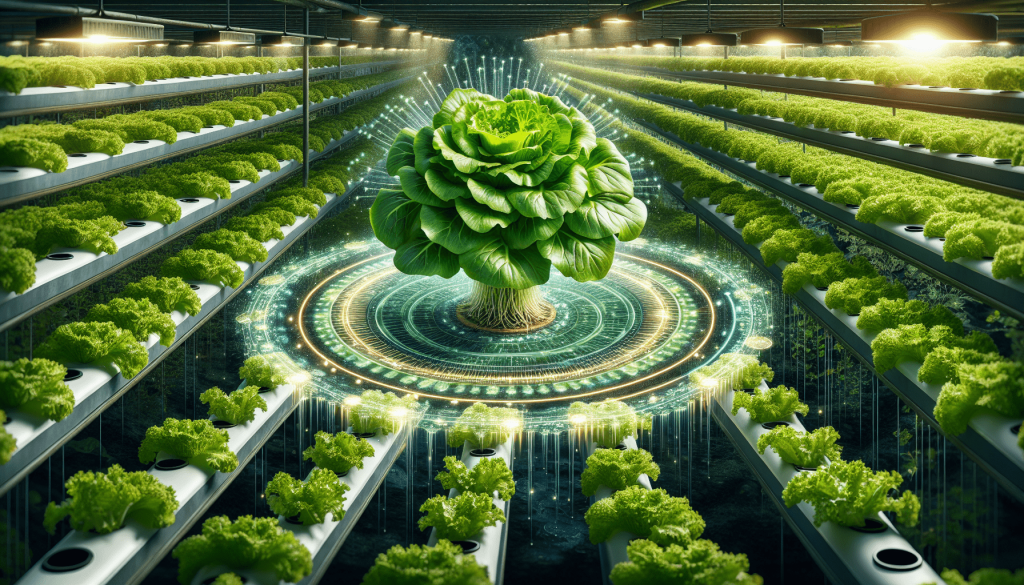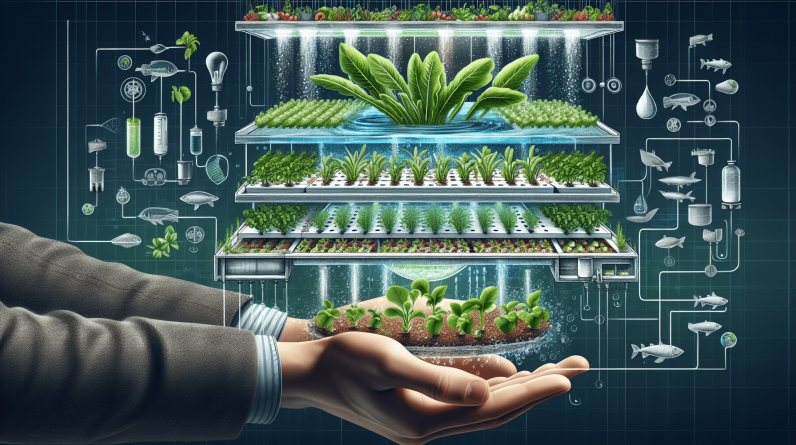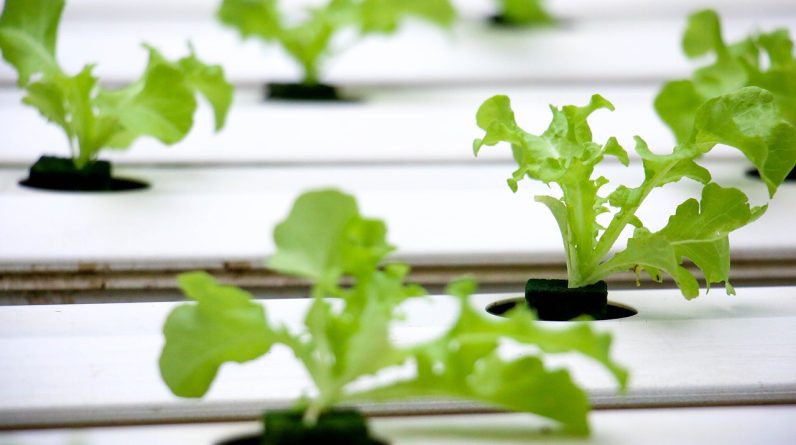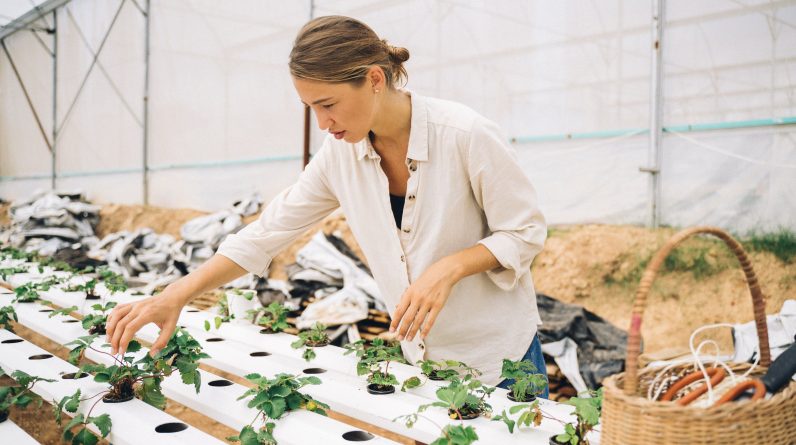
Are you ready to take your hydroponic growing system to the next level? In this article, we will explore the secrets to maximizing your yield and optimizing the performance of your hydroponic setup. With a few key strategies and techniques, you can increase the efficiency, productivity, and overall success of your indoor garden. Whether you are a seasoned hydroponics enthusiast or just starting out, these tips will help you achieve impressive results in your hydroponic growing system. So, let’s dive in and unlock the potential of your plants!
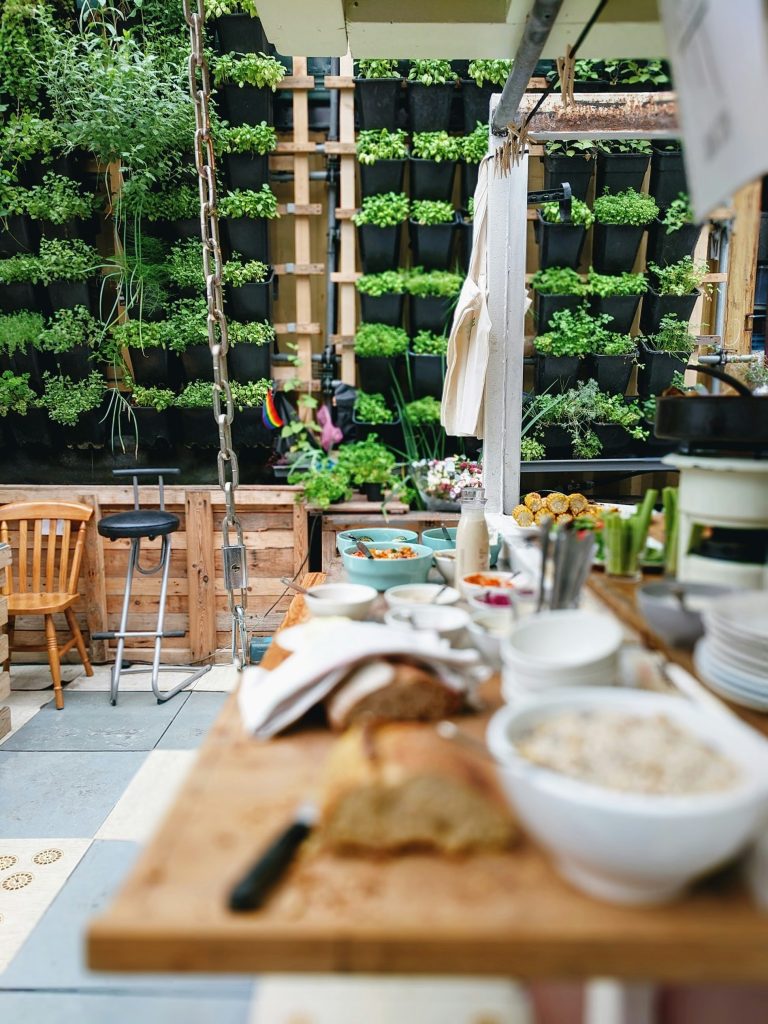
Choosing the Right Hydroponic System
Understanding Different Hydroponic Systems
When it comes to choosing the right hydroponic system for your needs, it’s important to understand the different options available. There are several types of hydroponic systems to choose from, each with its own advantages and disadvantages.
One popular option is the nutrient film technique (NFT) system. In this system, a thin film of nutrient-rich water flows over the roots of the plants, providing them with the necessary nutrients. Another option is the deep water culture (DWC) system, where the plant roots are suspended in nutrient-rich water.
Other common hydroponic systems include the ebb and flow system, aeroponics, and drip irrigation. Each system operates differently and requires varying levels of maintenance and monitoring. By understanding the different types of hydroponic systems, you can choose the one that best fits your needs and preferences.
Considerations for Selecting a System
When selecting a hydroponic system, there are a few important considerations to keep in mind. First, think about the space you have available. Some systems, such as ebb and flow or aeroponics, may require more vertical space compared to other systems like NFT or DWC.
You should also consider your level of experience and the amount of time you can dedicate to maintaining the system. Some systems may require more hands-on attention and monitoring, while others are more automated and low maintenance.
Lastly, think about the types of plants you want to grow. Certain systems may be better suited for specific types of plants. For example, leafy greens may thrive in an NFT system, while larger plants like tomatoes may require a more robust system like ebb and flow.
Factors to Consider for Your Specific Needs
Every grower’s needs are unique, so it’s important to consider your specific factors when selecting a hydroponic system. Some factors to consider include:
-
Water availability: If you have limited access to water, you may want to choose a system that is more water-efficient, such as aeroponics.
-
Budget: Different hydroponic systems have varying costs associated with them. Consider your budget and choose a system that aligns with your financial constraints.
-
Growth goals: Determine how much produce you want to grow and whether you have the space and resources to support your desired yield.
By considering these factors, you can choose the right hydroponic system that will best suit your needs and help you achieve optimal results in your indoor gardening endeavors.
Providing Adequate Lighting
Understanding Light Requirements for Plants
Light is a vital factor in the successful growth and development of hydroponic plants. Understanding the light requirements of different plants is crucial in providing them with the right amount and quality of light.
Photosynthesis is the process by which plants convert light into energy. Different plants have different light requirements, and understanding the optimal light intensity, spectrum, and duration for your plants is key to achieving maximum growth.
Some plants, like leafy greens, thrive under lower light conditions, while others, like fruiting plants, require more intense light. Researching the specific light requirements for the plants you intend to grow will help you choose the right type and intensity of grow lights.
Choosing the Right Type of Grow Lights
There are several types of grow lights to choose from, including fluorescent, LED, and high-intensity discharge (HID) lights. Each type of light has its own benefits and drawbacks, so it’s important to choose the right type for your specific needs.
Fluorescent lights are a popular choice for beginners due to their affordability and availability. They produce a cooler light and are suitable for growing leafy greens and seedlings. LED lights, on the other hand, are more energy-efficient and provide a broader spectrum of light. They are suitable for both vegetative growth and flowering stages of plants.
HID lights, such as metal halide (MH) and high-pressure sodium (HPS) lights, are more intense and emit a higher level of heat. They are commonly used for larger-scale growing operations and are suitable for plants in the flowering stage.
Ensuring Proper Placement and Coverage
Once you have chosen the right type of grow lights, it’s important to ensure proper placement and coverage to maximize their effectiveness. Position the lights at the right distance from your plants to avoid burning or stretching.
Different plants have different light intensity requirements, so adjust the height and distance of the lights accordingly. It’s important to regularly monitor the light intensity and adjust the height as your plants grow.
Additionally, ensure even coverage of light across all plants in your system. This can be achieved by positioning the lights at the appropriate angles and using reflectors or light baffles to redirect and distribute the light evenly.
By providing adequate lighting and optimizing its placement and coverage, you can ensure healthy and vigorous growth in your hydroponic plants.
Maintaining Proper Nutrient Balance
Understanding Essential Nutrients for Plants
Just like traditional soil-based gardening, hydroponic plants require essential nutrients for growth. These nutrients include macronutrients like nitrogen (N), phosphorus (P), and potassium (K), as well as micronutrients like iron (Fe), calcium (Ca), and magnesium (Mg).
In hydroponic systems, these nutrients are typically provided through nutrient solutions. These solutions are formulated to deliver the right balance of nutrients for the plants to thrive.
Each nutrient plays a specific role in the plant’s growth and development. Nitrogen is essential for leafy green growth, phosphorus is necessary for root development and flowering, and potassium helps in overall plant health and disease resistance.
Monitoring and Adjusting Nutrient Solutions
Maintaining a proper nutrient balance is crucial for the health and productivity of your hydroponic plants. Regular monitoring of nutrient levels in the solution is necessary to ensure that the plants are receiving the right amount of nutrients.
There are several methods for monitoring nutrient levels, including electrical conductivity (EC) and pH meters. EC meters measure the electrical conductivity of the nutrient solution, which is an indicator of nutrient concentration. pH meters, on the other hand, measure the acidity or alkalinity of the solution.
Based on the results from these measurements, you may need to adjust the nutrient solution accordingly. This can be done by adding or diluting the solution to achieve the desired nutrient balance.
Avoiding Nutrient Imbalances
While it is important to provide adequate nutrients for your plants, it’s equally crucial to avoid nutrient imbalances. Imbalances can occur when certain nutrients are present in excessive or insufficient quantities, which can lead to plant stress and poor growth.
To avoid nutrient imbalances, monitor the nutrient solution regularly and make adjustments as needed. Keep in mind that different plants may have different nutrient requirements, so research the specific needs of your plants to ensure optimal growth.
Maintaining a proper nutrient balance will help ensure the health and productivity of your hydroponic plants, allowing you to maximize your yield.
Optimizing Water Quality
Importance of Water Quality in Hydroponics
Water quality is a critical aspect of hydroponic gardening. Since hydroponic plants rely on a nutrient solution for their growth, it’s important to ensure that the water used is of high quality.
Poor water quality can negatively impact plant health and growth. Common water quality issues include high levels of harmful minerals, contaminants, and pathogens. These can affect nutrient uptake, create an unfavorable growing environment, and lead to plant diseases.
Testing and Treating Water for Optimal Results
Regularly testing and treating the water used in your hydroponic system is essential for optimal results. Water testing kits are available that can measure the pH, conductivity, and mineral content of the water.
pH levels should ideally be between 5.5 and 6.5 for most hydroponic plants. If the pH is too high or too low, you can use pH adjustment solutions to bring it within the desired range.
Water treatment methods, such as reverse osmosis or carbon filtration, can be used to remove impurities and contaminants from the water. These methods help ensure that the nutrient solution is free from harmful substances that could negatively impact plant health.
Preventing Contamination and Algae Growth
To maintain water quality, it’s important to prevent contamination and algae growth. Contamination can occur from sources such as dirty containers, tools, or even airborne pollutants. Regularly clean and sanitize your hydroponic equipment to minimize the risk of contamination.
Algae growth can be a common problem in hydroponic systems. Algae thrive in the presence of light and nutrients, making the nutrient solution an ideal environment for their growth. To prevent algae growth, ensure proper light intensity and coverage, as well as maintain a clean and sterile environment.
By optimizing water quality and implementing preventive measures, you can provide your hydroponic plants with a clean and healthy growing environment, leading to optimal growth and yield.
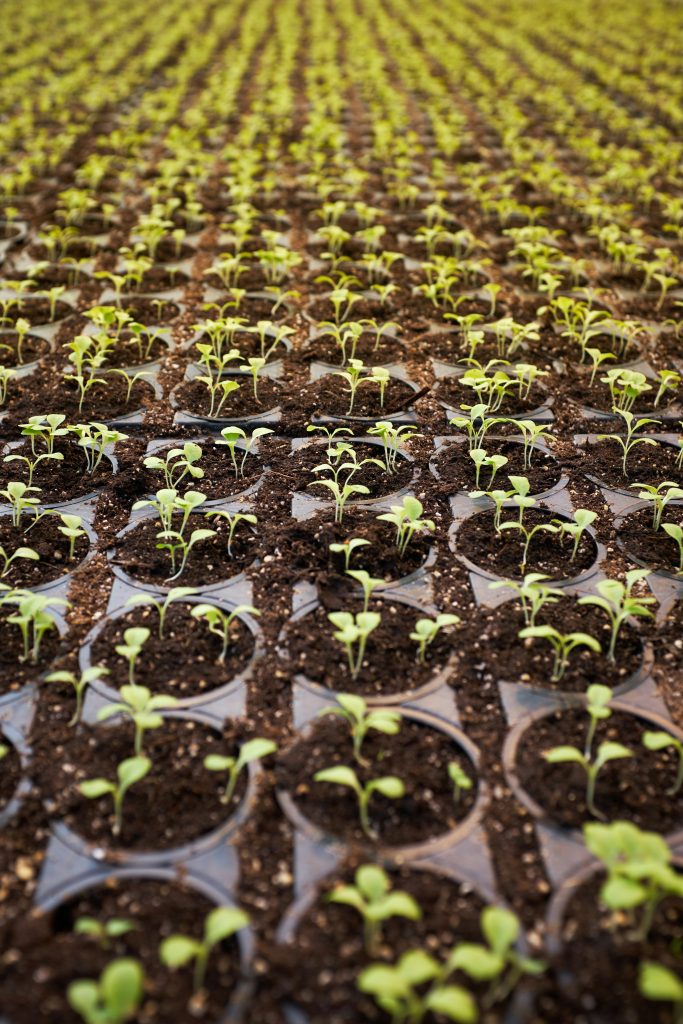
Managing pH Levels
Importance of pH in Hydroponics
Maintaining the proper pH levels in your hydroponic system is crucial for the health and growth of your plants. pH affects nutrient availability and uptake, as well as the overall plant metabolism and performance.
Each nutrient has an ideal pH range that allows for optimal absorption. If the pH is too high or too low, certain nutrients may become unavailable to the plants, leading to deficiencies or toxicities.
Monitoring and adjusting pH levels is essential to ensure that your plants are able to access the nutrients they need for healthy growth.
Methods for Measuring and Adjusting pH
pH levels can be measured using pH meters or pH test strips. These tools provide an accurate reading of the acidity or alkalinity of the nutrient solution.
If the pH levels are outside the desired range, pH adjustment solutions can be used to bring them back into balance. pH adjustment solutions are typically available in acidic or alkaline forms, allowing you to raise or lower the pH as needed.
It’s important to make gradual adjustments to pH levels to avoid shocking the plants. Monitor the pH regularly and make small incremental adjustments until the desired range is achieved.
Maintaining pH Stability
Maintaining pH stability is essential for the overall health and productivity of your hydroponic plants. Fluctuating pH levels can stress the plants and affect their nutrient uptake.
To maintain pH stability, regularly monitor the pH levels and make adjustments as needed. Keep in mind that water quality can also impact pH stability, so ensure that your water source is of high quality.
By effectively managing pH levels and maintaining stability, you can optimize nutrient availability and uptake, leading to healthy and vigorous growth in your hydroponic plants.
Controlling Temperature and Humidity
Understanding the Impact of Temperature and Humidity
Controlling temperature and humidity levels is crucial for creating an ideal growing environment for your hydroponic plants. Temperature and humidity directly impact plant metabolism, growth, and overall health.
Different plants have different temperature and humidity requirements, so it’s important to research the specific needs of your plants. In general, most hydroponic plants thrive in temperatures between 70°F and 80°F (21°C – 27°C) and prefer humidity levels between 40% and 60%.
Methods for Controlling and Monitoring Climate
To control the temperature and humidity in your hydroponic system, you can implement various methods. One effective way to regulate temperature is by using ventilation and air circulation systems. Fans and vents help maintain air movement, dispersing heat and preventing stagnant air pockets.
Cooling systems, such as air conditioners or evaporative coolers, can be used to lower temperature levels on hot days. Make sure to monitor the temperature regularly and adjust cooling systems as needed to maintain optimal conditions.
Humidity can be controlled through the use of dehumidifiers or humidifiers. Dehumidifiers remove excess moisture from the air, while humidifiers add moisture when the humidity level is too low.
Creating an Ideal Growing Environment
Creating an ideal growing environment involves finding the right balance between temperature and humidity. Regularly monitor and adjust these factors to ensure that your plants are thriving in the most optimal conditions.
By providing the right temperature and humidity levels, you create a comfortable and conducive environment for your hydroponic plants to grow and flourish.
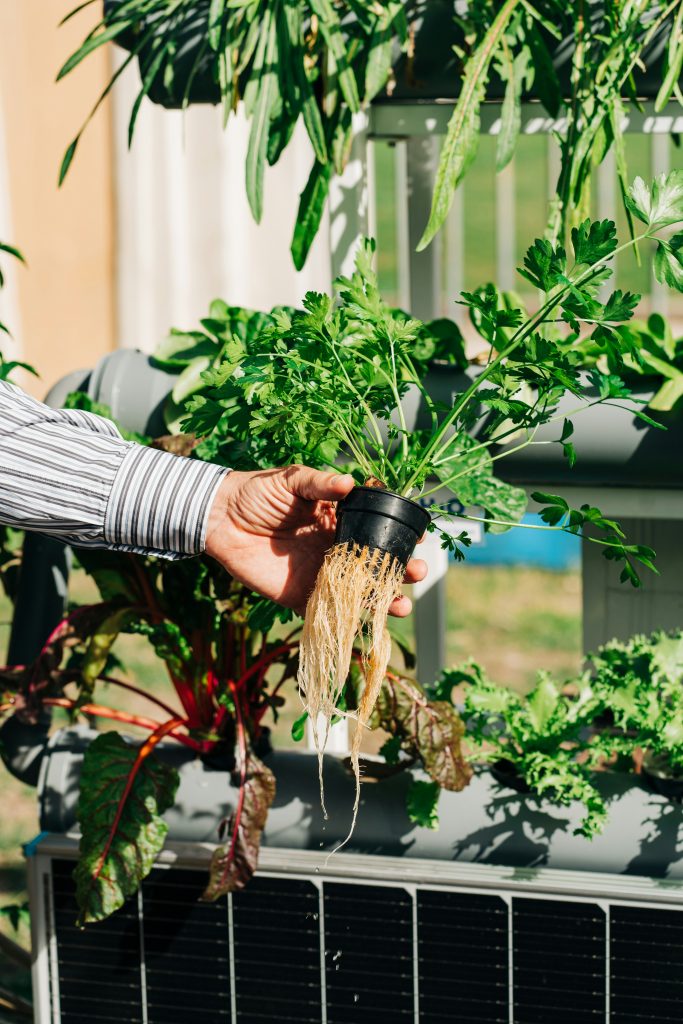
Ensuring Sufficient Air Circulation
Importance of Air Circulation in Hydroponics
Air circulation plays a vital role in maintaining a healthy and thriving hydroponic system. Adequate air circulation helps in several ways, including:
-
Reinforcing plant transpiration: Proper air circulation helps evaporate excess moisture from plant leaves, preventing the onset of diseases caused by damp conditions.
-
Enhancing CO2 availability: Good air circulation ensures the efficient exchange of gases, particularly CO2, which is essential for photosynthesis and plant growth.
-
Strengthening plant stems: Gentle air movement helps promote strong and sturdy stems, ensuring optimal plant support and preventing breakage.
Choosing the Right Ventilation System
To ensure sufficient air circulation, it’s important to choose the right ventilation system for your hydroponic setup.
A simple yet effective option is using oscillating fans to create gentle air movement. Position the fans strategically to circulate air around the plants, ensuring that they are not directly blowing onto the plants, as this can cause damage.
For larger-scale operations, consider installing inline fans or ventilation systems. These systems can be connected to ducting or air vents to distribute air evenly throughout the growing area.
Positioning Fans and Vents
When positioning fans and vents, it’s important to consider the layout of your hydroponic system. Place fans at strategic locations to ensure that air circulates around all plants, including those in the corners or hard-to-reach areas.
Position vents near the base of the plants to draw in fresh air and near the top to remove stale air. This creates a continuous flow of air, ensuring that your plants receive a constant supply of fresh CO2 and preventing the buildup of humidity.
By ensuring sufficient air circulation, you can create a healthy and thriving environment for your hydroponic plants, leading to optimal growth and productivity.
Managing Pests and Diseases
Common Pests and Diseases in Hydroponics
While hydroponic systems can be less prone to pests and diseases compared to traditional soil-based gardening, they are not immune to these issues.
Common pests in hydroponics include aphids, whiteflies, and spider mites. These pests can damage plants by feeding on their leaves or sap, leading to stunted growth or even death if left uncontrolled.
Diseases such as root rot and powdery mildew can also affect hydroponic plants. These diseases are typically caused by fungal or bacterial pathogens and can lead to root damage, nutrient uptake issues, and overall plant decline.
Preventive Measures and Integrated Pest Management
Preventing pests and diseases is essential for the health and productivity of your hydroponic plants. Implementing preventive measures and practicing integrated pest management (IPM) can help keep these issues at bay.
Some preventive measures include:
-
Maintaining a clean and sterile environment: Regularly clean and sanitize your hydroponic equipment to minimize the risk of pests and diseases.
-
Proper plant spacing: Avoid overcrowding plants, as this can create conditions that favor pest and disease development.
-
Quarantining new plants: Before introducing new plants into your system, quarantine them to ensure that they are pest and disease-free.
IPM involves a combination of techniques to manage pests and diseases, including biological controls, cultural practices, and, if necessary, targeted pesticide or fungicide applications. By using IPM, you can minimize the use of chemical interventions and maintain a healthy and balanced ecosystem within your hydroponic system.
Treatment Options for Pest and Disease Control
If pests or diseases do arise in your hydroponic system, timely intervention is crucial. There are several treatment options available, including insecticidal soaps, botanical oils, and biological controls such as predatory insects.
It’s important to identify the specific pest or disease affecting your plants and choose the appropriate treatment method. Follow the instructions provided by the manufacturer to ensure safe and effective control.
Regular monitoring and inspections are essential to catch any pest or disease issues early on. By promptly addressing these issues, you can minimize damage and protect the health of your hydroponic plants.

Monitoring and Adjusting pH
Importance of Regular Monitoring
Regular monitoring of pH levels in your hydroponic system is essential for maintaining the health and productivity of your plants. pH affects nutrient availability and uptake, as well as overall plant performance.
By monitoring pH levels, you can ensure that your plants are able to access the nutrients they need, preventing deficiencies or toxicities.
Methods for Measuring pH
Measuring pH levels in your hydroponic system can be done using pH meters or pH test strips. pH meters provide a more accurate and precise reading of the acidity or alkalinity of the nutrient solution.
To measure pH levels, simply dip the pH meter or test strip into the nutrient solution and compare the color or numerical reading to the pH scale. Repeat this process at different locations in your system to ensure an accurate representation of the overall pH levels.
Adjusting pH Levels
If the pH levels are outside the desired range, adjustments may be necessary. pH adjustment solutions are available in acidic or alkaline forms and can be used to raise or lower the pH as needed.
When adjusting pH levels, it’s important to make gradual changes to avoid shocking the plants. Make small incremental adjustments and monitor the pH levels regularly to ensure that they stay within the desired range.
By monitoring and adjusting pH levels, you can optimize nutrient availability and uptake, leading to healthy and vigorous growth in your hydroponic plants.
Regular Maintenance and Cleaning
Cleaning and Sanitizing Hydroponic Equipment
Regular maintenance and cleaning of your hydroponic equipment is essential for optimal functioning and plant health. Over time, equipment can accumulate debris, mineral deposits, and biological contaminants, which can affect the overall performance of your system.
To clean and sanitize your hydroponic equipment, follow these steps:
-
Empty and flush the system: Drain the nutrient solution and thoroughly flush the system with clean water to remove any leftover debris or residue.
-
Disassemble and clean individual components: Disassemble the equipment, such as pumps, tubing, and reservoirs, and clean them using a mild detergent or hydrogen peroxide solution. Use a soft brush or cloth to scrub away any buildup.
-
Rinse thoroughly: After cleaning, rinse all components with clean water to remove any remaining cleaning solution or residue.
-
Sanitize: Once rinsed, sanitize the equipment using a commercial sanitizer or a mixture of water and bleach. Follow the instructions provided by the manufacturer for the appropriate dilution and contact time. Ensure that all surfaces are thoroughly sanitized.
-
Reassemble and refill the system: Once the equipment is completely dry, reassemble the components and refill the system with fresh nutrient solution.
Regular Maintenance for Optimal Functioning
In addition to regular cleaning, ongoing maintenance is necessary to ensure optimal functioning of your hydroponic system. This includes:
-
Checking and adjusting nutrient levels: Regularly monitor and adjust the nutrient solution to maintain the desired balance of essential nutrients.
-
Inspecting and replacing worn components: Regularly inspect all components of your hydroponic system for signs of wear or damage. Replace any worn-out parts to prevent equipment breakdowns.
-
Calibrating meters: If you are using pH or EC meters, calibrate them regularly to ensure accurate readings.
-
Troubleshooting issues: Keep a close eye on your plants for any signs of stress or issues. Promptly investigate and address any problems to prevent further damage.
By performing regular maintenance and cleaning tasks, you can prevent equipment breakdowns, maintain plant health, and optimize the overall functioning and efficiency of your hydroponic system.
In conclusion, maximizing your yield in a hydroponic growing system requires careful consideration and attention to various factors. Choosing the right hydroponic system, providing adequate lighting, maintaining proper nutrient balance, optimizing water quality, managing pH levels, controlling temperature and humidity, ensuring sufficient air circulation, managing pests and diseases, monitoring and adjusting pH, and regular maintenance and cleaning are all important aspects to focus on.
By understanding the different hydroponic systems available, considering your specific needs, and selecting the appropriate system, you set the foundation for success. Providing the right type of grow lights and ensuring proper placement and coverage helps fulfill the light requirements of your plants. Maintaining a proper nutrient balance, monitoring and adjusting nutrient solutions, and avoiding nutrient imbalances contribute to healthy growth. Optimizing water quality, testing and treating water, and preventing contamination and algae growth promote the well-being of your plants. Managing pH levels, measuring and adjusting pH, and maintaining pH stability are critical for nutrient uptake. Controlling temperature and humidity, monitoring and adjusting the climate, and creating an ideal growing environment optimize plant growth. Ensuring sufficient air circulation, choosing the right ventilation system, and positioning fans and vents improve overall plant health. Managing pests and diseases, implementing preventive measures, and utilizing treatment options help protect your plants. Regular monitoring of pH levels, measuring pH accurately, and adjusting pH as needed maintain nutrient availability and uptake. Finally, regular maintenance and cleaning, which includes cleaning and sanitizing hydroponic equipment, performing regular maintenance tasks, and preventing equipment breakdowns, contribute to the longevity and productivity of your hydroponic growing system.
With thorough understanding and implementation of these key factors, you can maximize your yield and achieve success in your hydroponic gardening endeavors.
